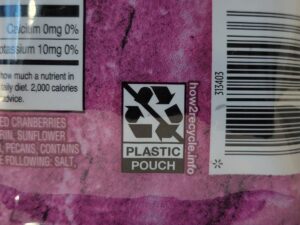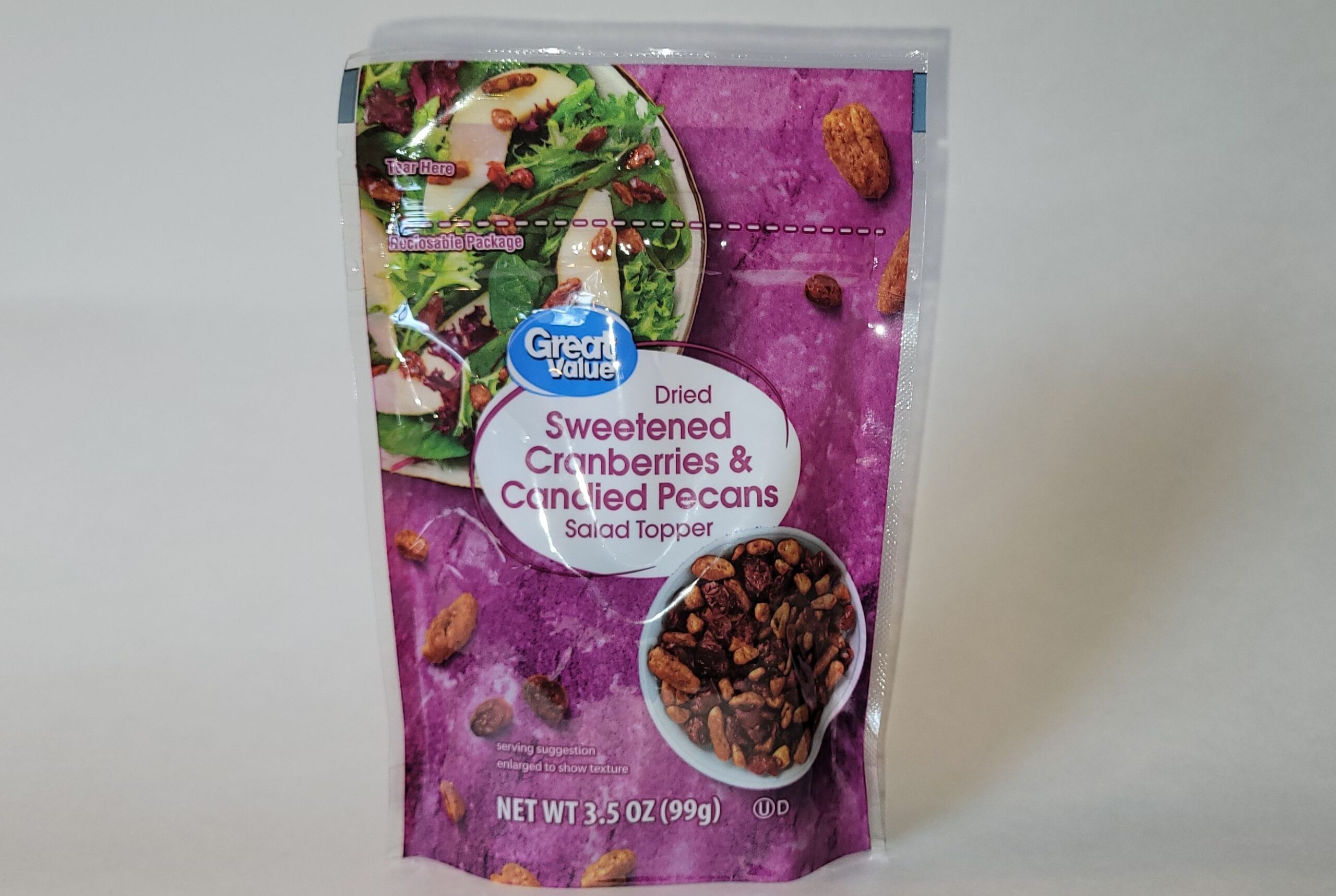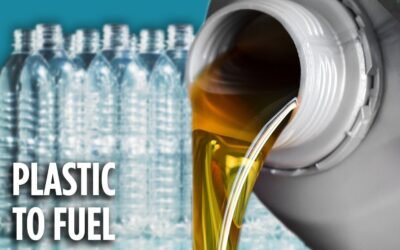The Unrecyclable Predicament of Great Value's Salad Topper Packaging
Rating = Zero Stars
In the growing consciousness around environmental sustainability, packaging plays a pivotal role in a product’s lifecycle and its overall impact on our planet. The “Enhanced Recyclability Rating – Product Packaging Recycle Rating System” offers a comprehensive framework to evaluate and rate packaging based on its recyclability. This system ranges from Five Stars for fully recyclable packaging requiring no consumer preparation, down to Zero Stars for packaging that is not recyclable at all. Unfortunately, the “Dried Sweetened Cranberries and Candied Pecans Salad Topper” by Great Value, a Walmart brand, falls into the latter category, meriting a Zero Star rating. Let’s delve into the reasons behind this rating and the implications it holds for consumers and the environment.

Material Composition
The primary reason for the Zero Star rating is the material composition of the packaging. The salad topper is packaged in a plastic pouch that is completely non-recyclable. This type of packaging often involves complex composites or plastics that are not accepted in curbside recycling programs. These materials are difficult to process, separate, and repurpose, making them a challenge for recycling facilities.
Environmental Impact
The use of non-recyclable plastics contributes significantly to environmental pollution. These materials often end up in landfills, where they take centuries to degrade, if at all. Alternatively, they can become litter, polluting landscapes, waterways, and oceans, harming wildlife and ecosystem health. By using packaging that cannot be recycled, the product contributes to the growing problem of plastic waste.
Consumer Effort and Education
Another aspect of the Zero Star rating considers consumer effort and education. In this case, the packaging does not provide any clear, visible instructions on recycling or disposal, primarily because there is no environmentally friendly way to dispose of it. This lack of information can lead to confusion and improper disposal practices, exacerbating the problem of waste management.
Missed Opportunities for Sustainability
The decision to use completely non-recyclable packaging also overlooks opportunities to design for sustainability. Alternatives exist that could either reduce the environmental impact through recyclable materials or offer designs that are conducive to reuse. The rating system encourages companies to explore these avenues, rewarding those that incorporate reusable elements or use materials widely accepted in recycling programs.
The Call for Change
This Zero Star rating serves as a call to action for Great Value and other brands to reconsider their packaging choices. With advancements in materials science and a growing market demand for sustainable products, there are ever-increasing options for environmentally friendly packaging. Consumers are becoming more aware of the environmental impact of their purchases and are more likely to support brands that demonstrate a commitment to sustainability.
Sustainable Alternatives
Adopting more sustainable approaches to salad topping packaging and production is not just beneficial for the environment; it’s also increasingly becoming a consumer demand. Companies have a multitude of avenues to explore that can significantly reduce their environmental footprint while catering to the eco-conscious shopper. Here are several alternative approaches that could make salad toppings more sustainable:
- Biodegradable or Compostable Packaging – One of the most direct routes to sustainability is the use of packaging materials that can biodegrade or be composted. Materials such as PLA (polylactic acid), a bioplastic derived from renewable resources like corn starch, or compostable paper options, can significantly reduce waste. While they may require specific composting conditions, they offer a far less impactful end-of-life scenario than traditional plastics.
- Recyclable Materials – For products not suited to biodegradable options, using 100% recyclable materials is crucial. Glass jars, aluminum tins, and certain types of plastic (like PET) that are widely accepted in curbside recycling programs provide excellent alternatives. The key is ensuring the packaging is made from a single material, or easily separable materials, to facilitate recycling.
- Reusable Containers – Encouraging reuse is another effective strategy. Packaging salad toppings in reusable containers, such as glass jars or metal tins, not only minimizes waste but can also enhance the brand’s appeal through aesthetic and practical value. Brands could incentivize the return or reuse of these containers, fostering a circular economy model where materials are kept in use for as long as possible.
- Bulk Bins – Offering salad toppings in bulk bins at grocery stores or specialty markets can drastically cut down on packaging waste. Consumers can bring their own containers, reducing the need for individual packaging. This approach also allows consumers to purchase exactly the amount they need, potentially reducing food waste as well.
- Minimalist Packaging Design – Reducing the amount of material used in packaging, regardless of the material type, is a straightforward way to lessen environmental impact. Minimalist designs that use thinner materials, eliminate unnecessary components, and optimize size for the product can make a significant difference in the amount of waste generated.
- Edible Packaging – An innovative, albeit niche, solution is edible packaging. This could be particularly fitting for salad toppings, where the packaging itself could contribute to the nutritional value and taste of the salad. While not widely adopted, this approach represents the cutting edge of sustainable packaging solutions.
- Local Sourcing and Production – Sustainability isn’t just about the packaging; it’s also about how the product is sourced and produced. Salad toppings sourced from local suppliers reduce transportation emissions. Additionally, supporting local economies and reducing the carbon footprint associated with long-distance transportation can significantly enhance a product’s sustainability profile.
- Transparency and Consumer Education – Finally, providing clear information about the sustainability of the product and its packaging can empower consumers to make environmentally responsible choices. This includes labeling that clearly states how to dispose of the packaging, whether it’s recyclable, compostable, or reusable, and offering insights into the sourcing and production ethics of the product.
In summary, the push towards more sustainable salad topping options requires a comprehensive strategy that spans the entire lifecycle of the product—from sourcing to disposal—and encompasses the materials used in packaging. By adopting innovative approaches, companies can significantly mitigate their environmental footprint and cater to the burgeoning demand for eco-friendly products. The issue with Great Value’s non-recyclable salad topper packaging goes beyond environmental harm; it signifies a lost chance to resonate with consumer values focused on sustainability. This situation underscores the critical need for continuous innovation in packaging design and materials, aiming to minimize waste and enhance sustainability. As part of a wider initiative to lessen environmental impact, companies must prioritize recyclability and sustainability within their packaging strategies, thereby advancing towards a more sustainable, responsible consumer market.





